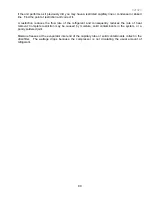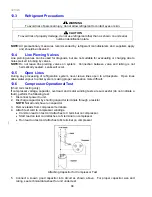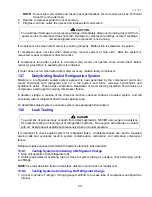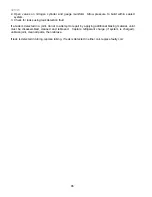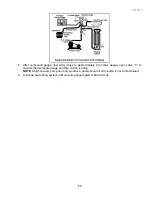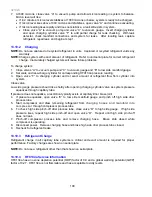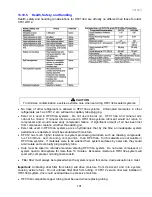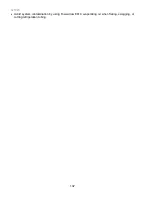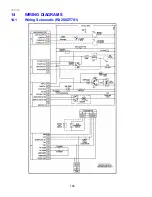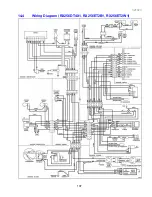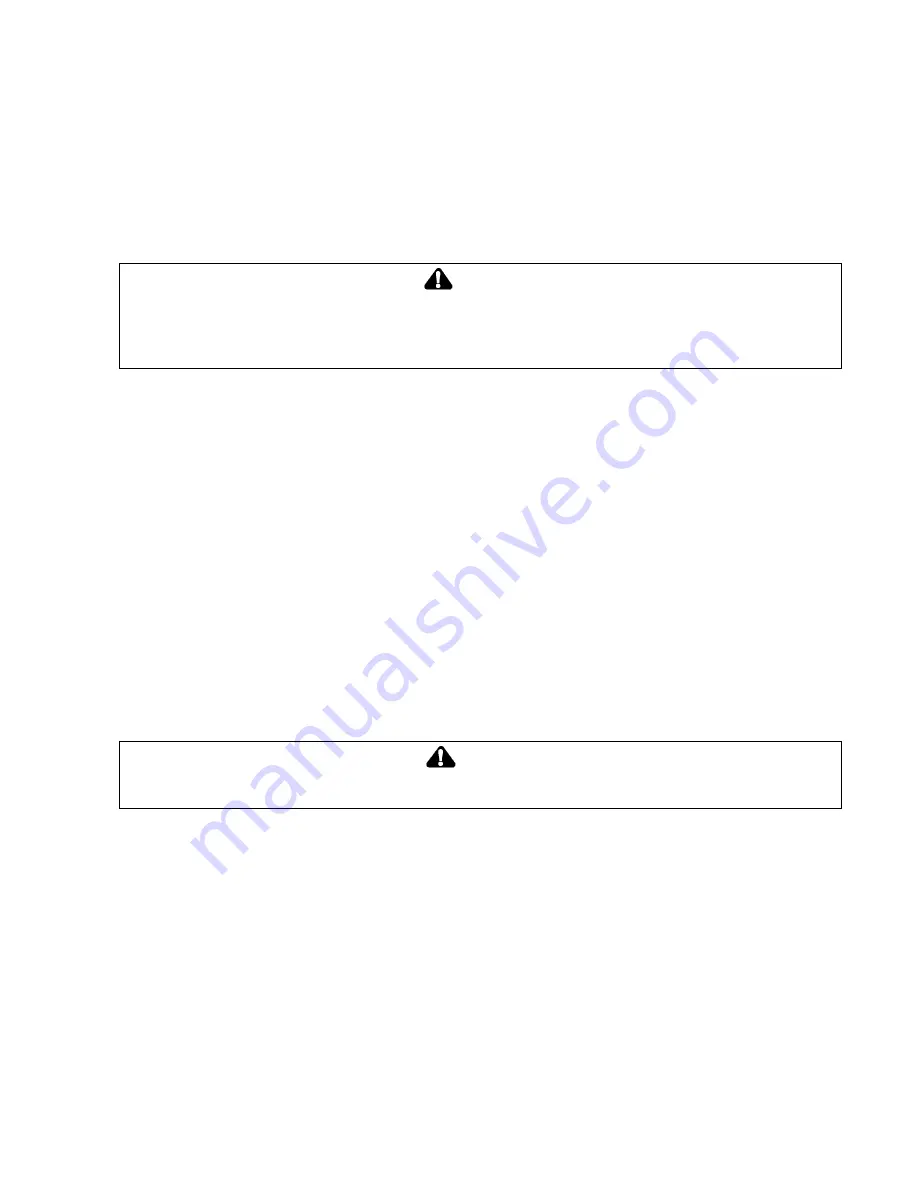
321023
103
13.11
Replacement Service Compressor
HFC134a service compressors will be charged with ester oil and pressurized with dry nitrogen. Before
replacement compressor is installed, pull out 1 rubber plug. A
pop
from pressure release should be
heard. If a
pop
sound is not heard, do not use compressor. Positive pressure in compressor is vital
to keep moisture out of ester oil. Do not leave compressor open to atmosphere for more than 10
minutes.
13.11.1 Compressor
Testing
Procedures
WARNING
To avoid death or severe personal injury, never use oxygen, air or acetylene for pressure testing
or clean out of refrigeration system. Use of oxygen, air, or acetylene may result in violent
explosion. Oxygen may explode on contact with oil and acetylene will spontaneously explode
when under pressure.
Refer to Technical Data Sheet “Temperature Relationship Chart” for operating watts, test points,
and temperature relationship test for unit being tested.
•
Temperature testing is accomplished by using 3 lead thermocouple temperature tester in specific
locations. Test point T-1 is outlet on evaporator coil and T-2 is inlet. Test point T-3 is suction tube
temperature midway between where armaflex ends and suction port of compressor (approximately
300mm from compressor).
•
Thermocouple tips should be attached securely to specified locations.
•
Do not test during initial
pull down.
Allow one off cycle or balanced temperature condition to occur
before proceeding with testing.
•
Refrigerator must operate minimum of 20 minutes after thermocouples are installed.
•
Turn control to colder to obtain required on time.
•
Wattage reading must be recorded in conjunction with temperature test to confirm proper operation.
•
Suction and head pressures are listed on “Temperature and Relationship Chart”. Normally these
are not required for diagnosis but used for confirmation on systems which have been opened.
13.12 Brazing
CAUTION
To avoid risk of personal injury or property damage, take necessary precautions against high
temperatures required for brazing.
Satisfactory results require cleanliness, experience, and use of proper materials and equipment.
Connections to be brazed must be properly sized, free of rough edges, and clean.
Generally accepted brazing materials are:
•
Copper to copper joints:
SIL-FOS (alloy of 15 percent silver, 80 percent copper, and 5 percent
phosphorous). Use without flux. Recommended brazing temperature is approximately 760°C. Do
not use for copper to steel connection.
•
Copper to steel joints:
SILVER SOLDER (Easy Flow. An alloy of 30 percent silver, 38 percent
copper, 32 percent zinc). Use with fluoride based flux. Recommended brazing temperature is
approximately 650°C.
•
Steel to steel joints:
SILVER SOLDER (Easy Flow. See copper to steel joints).
•
Brass to copper joints:
SILVER SOLDER (Easy Flow. See copper to steel joints).
•
Brass to steel joints:
SILVER SOLDER (Easy Flow. See copper to steel joints).
Summary of Contents for RX256DT4X1
Page 11: ...321023 11 2 3 Refrigerant Flow...
Page 12: ...321023 12 2 4 Cabinet Air Flow...
Page 13: ...321023 13 2 5 Ice And Water Dispenser Diagram...
Page 14: ...321023 14 2 6 Water Valve Diagram...
Page 15: ...321023 15 2 7 Typical External Sweat Pattern...
Page 16: ...321023 16 3 INSTALLATION...
Page 17: ...321023 17...
Page 18: ...321023 18...
Page 76: ...321023 76 Ice Water Dispensing Board...
Page 78: ...321023 78 Mid Electronic Specification Control RX256DT4X1 RX256ET2B1 RX256ET2W1...
Page 104: ...321023 104 14 WIRING DIAGRAMS 14 1 Wiring Schematic RX256DT7X1...
Page 105: ...321023 105 14 2 Wiring Diagram RX256DT7X1...
Page 106: ...321023 106 14 3 Wiring Schematic RX256DT4X1 RX256ET2B1 RX256ET2W1...
Page 107: ...321023 107 14 4 Wiring Diagram RX256DT4X1 RX256ET2B1 RX256ET2W1...
Page 108: ...321023 108 NOTES...

